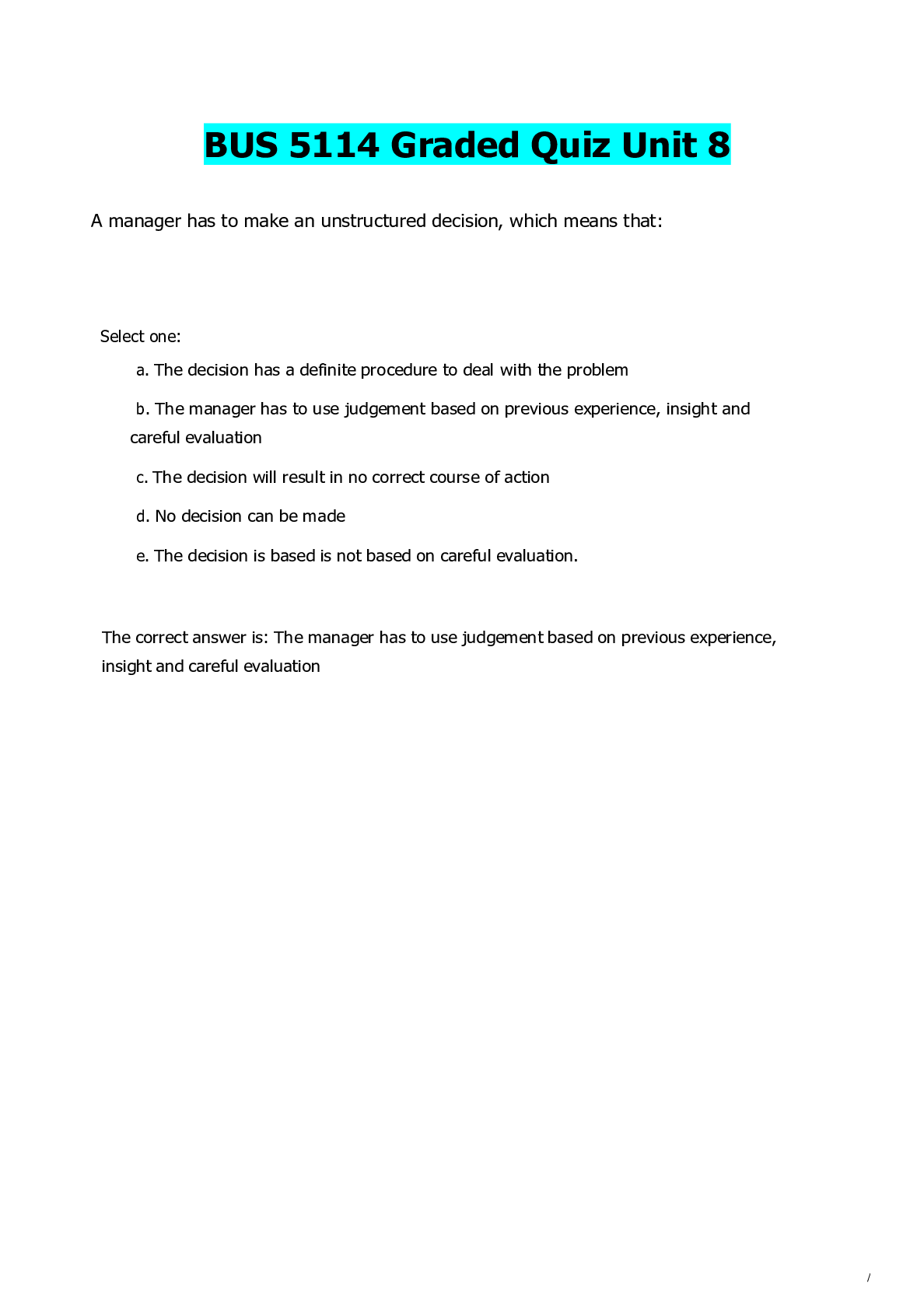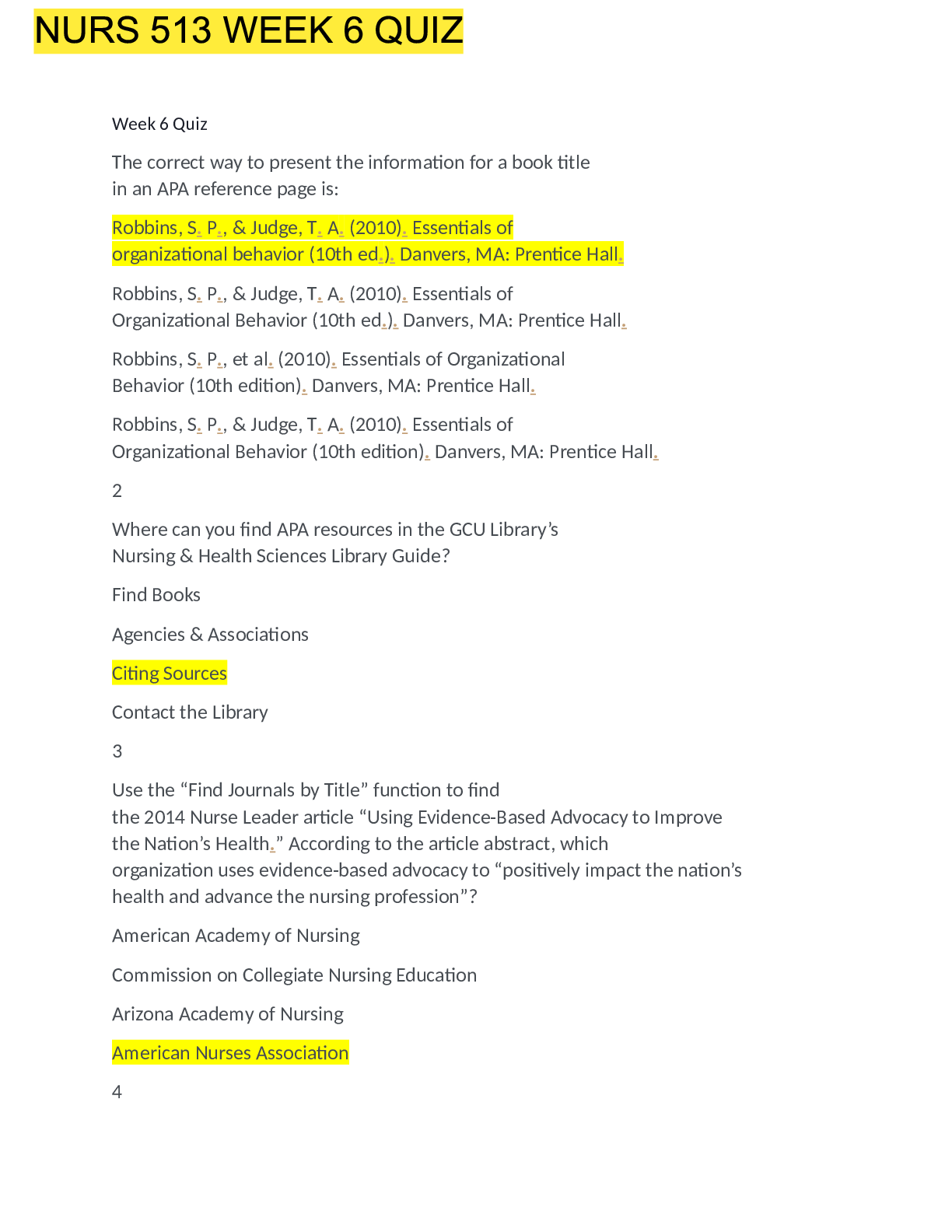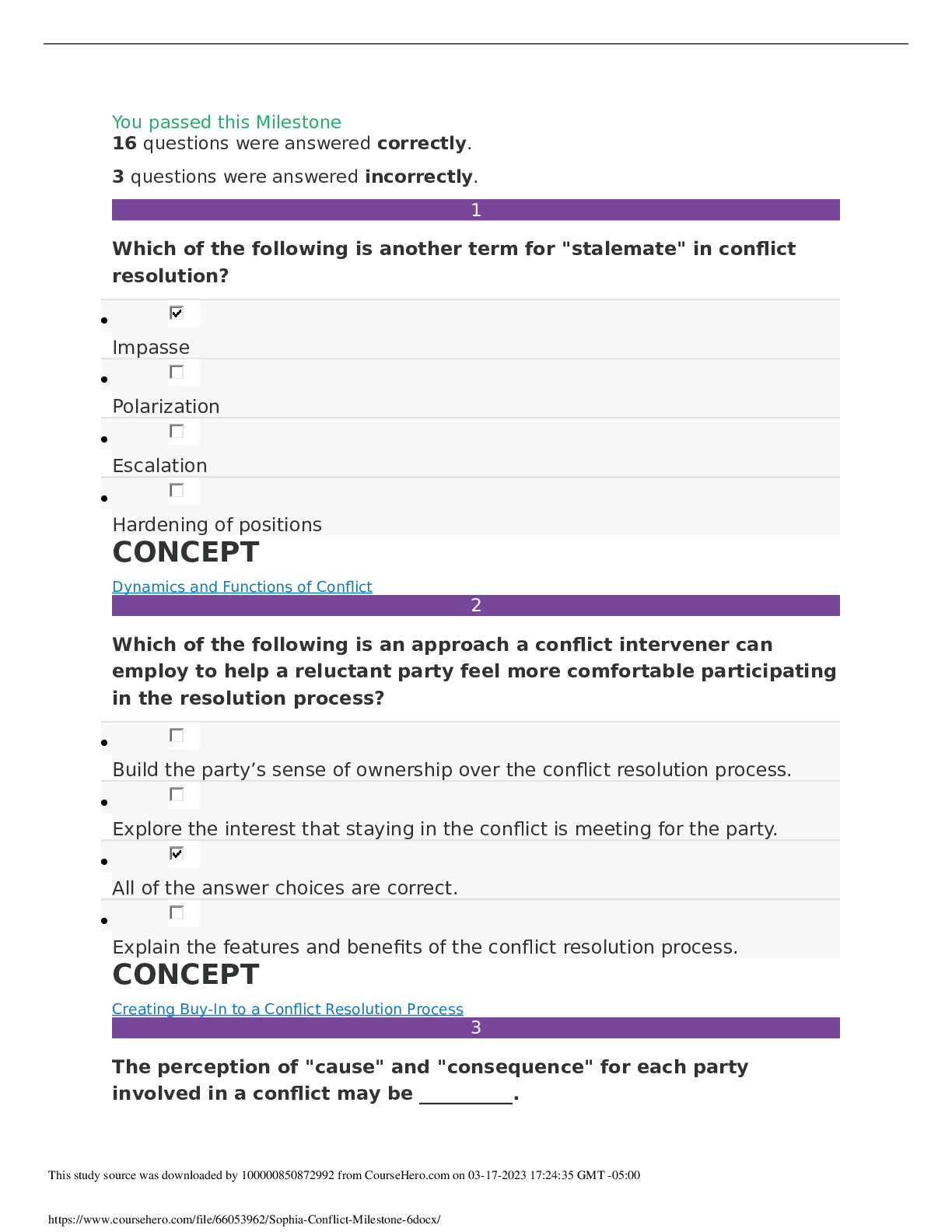NURS-6501N-Quiz Wk5_ WALDEN UNIVERSITY: QUESTION AND ANSWERS RATED A+
Document Content and Description Below
Question 2 1 out of 1 points A newborn is diagnosed with congenital heart disease. Which of the following intrauterine factors should the nurse focus on during the history that could have caused thi... s disorder? Question 3 1 out of 1 points A 50-year-old male was admitted to the intensive care unit with a diagnosis of acute myocardial infarction (MI). He is being treated for shock. His cardiopulmonary symptoms include low blood pressure, tachycardia, and tachypnea. His skin is pale and cool. The primary cause of his shock is most likely: Question 4 1 out of 1 points An infant undergoes an echocardiogram for a suspected heart defect. Tests reveal an opening in the middle of the atrial septum. What term would the nurse use to describe this defect? Selected Answer: Question 5 1 out of 1 points A 67-year-old female was previously diagnosed with rheumatic heart disease. Tests reveal lipoprotein deposition with chronic inflammation that impairs blood flow from the left ventricle into the aorta. Which of the following is the most likely diagnosis recorded on the chart? Selected Answer: Question 6 1 out of 1 points A 75-year-old obese female presents to her primary care provider reporting edema in the lower extremities. Physical exam reveals that she has varicose veins. Upon performing the history, which of the following is a possible cause for the varicose veins? Selected Answer: Question 7 0 out of 1 points A newborn is suspected of having coarctation of the aorta. Which of the following assessments would aid in diagnosis? Question 8 1 out of 1 points An 8-week-old infant presents to her primary care provider for a well-baby check. Physical exam reveals a murmur, and an echocardiogram shows a large ventricular septal defect. If left untreated, what condition should the nurse discuss with the parents? Question 9 1 out of 1 points A nurse is planning care for a patient in shock. Which principle should the nurse remember? During shock states, glucose uptake is usually: Question 10 1 out of 1 points A 72-year-old female has a history of right heart failure caused by a right ventricular myocardial infarction. Which of the following symptoms are specifically related to her right heart failure? Question 11 1 out of 1 points A newborn experiences frequent periods of cyanosis, usually occurring during crying or after feeding. Which of the following is the most likely diagnosis the nurse will observe on the chart? Question 12 1 out of 1 points A newborn child has a murmur and cyanosis. An echocardiogram reveals that the tricuspid valve failed to develop and no blood flows between the right atrium and ventricle. What term will the nurse use to describe this condition? Tricuspid: Question 13 1 out of 1 points A 72-year-old female has a history of hypertension and atherosclerosis. An echocardiogram reveals backflow of blood into the left ventricle. Which of the following is the most likely diagnosis documented on the chart? Question 14 1 out of 1 points A 56-year-old male presents to his primary care provider for a checkup. Physical exam reveals edema, hepatomegaly, and muffled heart sounds. Which of the following is of greatest concern to the nurse? Question 15 1 out of 1 points When a patient asks the nurse what is the most common cause of myocardial ischemia, which statement is the correct response? The most common cause of myocardial ischemia is: Question 16 1 out of 1 points A 75-year-old male has severe chest pain and dials 911. Lab tests at the hospital reveal elevated levels of cardiac troponins I and T. Based upon the lab findings, the nurse suspects which of the following has occurred? Question 17 1 out of 1 points When a patient with left heart failure starts to have a cough and dyspnea, which principle should the nurse remember? Pulmonary symptoms, common to left heart failure, are a result of: Question 18 1 out of 1 points A nurse is teaching staff about endocarditis. Which information should the nurse include? Inflammatory cells have difficulty limiting the colonization of microorganisms in infective endocarditis because the: Question 19 1 out of 1 points A nurse recalls the most common cardiac valve disease in the United States, which tends to be most prevalent in young women, is: Question 20 1 out of 1 points A 42-year-old female is diagnosed with constrictive pericarditis. The nurse assesses the blood pressure for decreased cardiac output because of: Question 21 1 out of 1 points A newborn child is diagnosed with tetralogy of Fallot. What symptoms would the nurse expect to observe in the child? Question 22 0 out of 1 points Upon assessment of the patient, the nurse finds a widened pulse pressure and throbbing peripheral pulses. Which valve disorder does the nurse suspect? Question 23 1 out of 1 points A 2-week-old infant presents with poor feeding, fatigue, dyspnea, and a murmur. She is diagnosed with a patent ductus arteriosus (PDA). A nurse recalls this condition results in a(n): Question 24 1 out of 1 points A 55-year-old male died of a myocardial infarction. Autopsy would most likely reveal: Question 25 1 out of 1 points A 30-year-old female presents to her primary care provider with fever, cardiac murmur, and petechial skin lesions. She is diagnosed with infective endocarditis. When the patient wants to know what caused the disease, what is the nurse’s best response? The most likely cause of the disease is: Question 26 1 out of 1 points A 3-year-old male is diagnosed with Kawasaki disease. Which of the following does the nurse suspect is the most likely cause? Question 27 1 out of 1 points While planning care, the nurse remembers which principle? In valvular _____, the valve opening is constricted and narrowed because the valve leaflets, or cusps, fail to open completely. Question 28 1 out of 1 points A 60-year-old female had a myocardial infarction. She was brought to the hospital 30 minutes later. She survived, but now the nurse is providing care for impaired ventricular function because: Question 29 1 out of 1 points A 20-year-old male underwent an echocardiogram to assess chest pain. Results revealed a congenital defect in papillary muscles. Which of the following would the nurse expect to occur? Question 30 1 out of 1 points A 15-year-old male who is allergic to peanuts eats a peanut butter cup. He then goes into anaphylactic shock. Which assessment findings will the nurse assess for? Question 31 1 out of 1 points One consequence of switching from aerobic to anaerobic cellular metabolism during shock states is: [Show More]
Last updated: 1 year ago
Preview 1 out of 7 pages
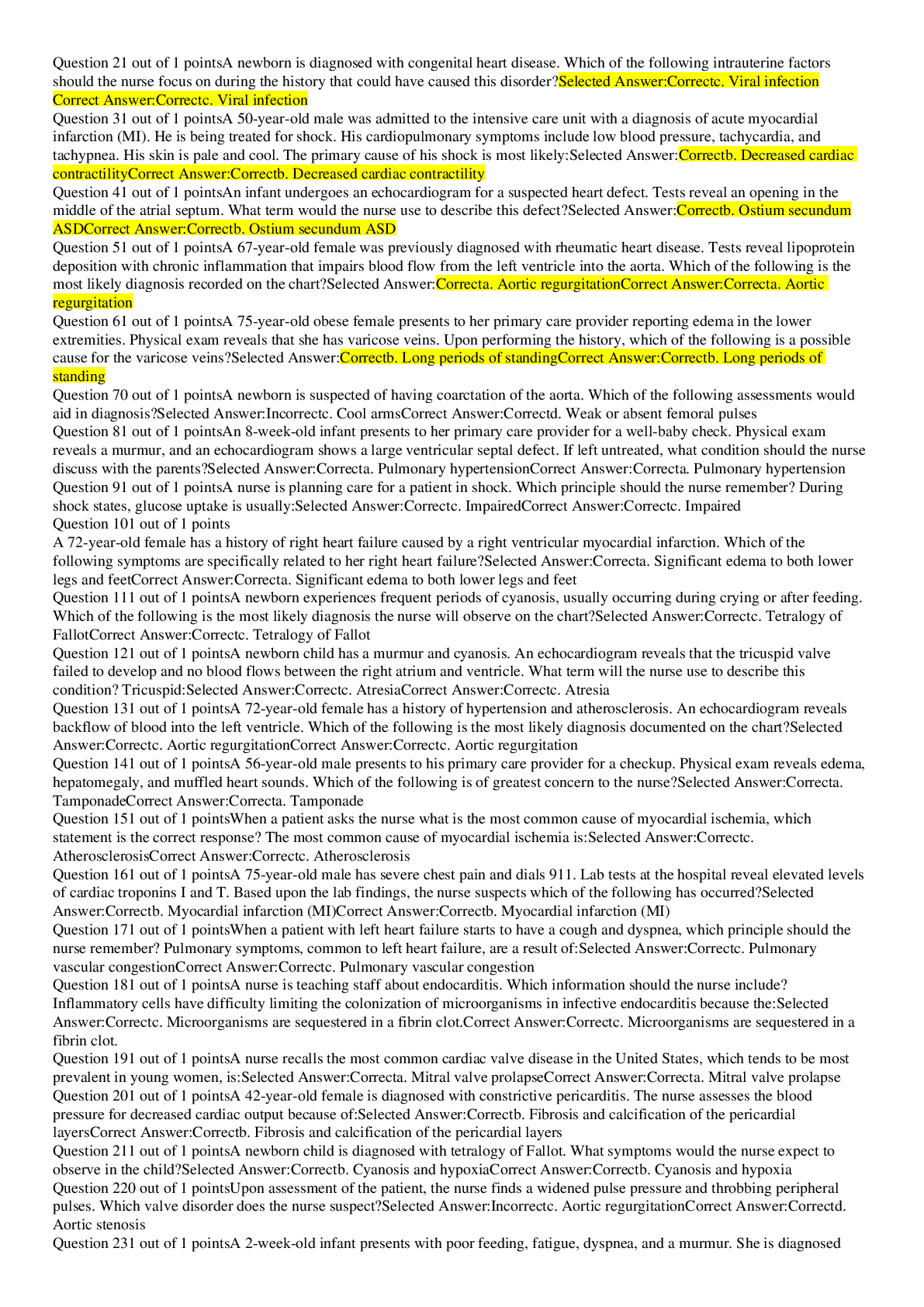
Reviews( 0 )
Document information
Connected school, study & course
About the document
Uploaded On
May 08, 2020
Number of pages
7
Written in
Additional information
This document has been written for:
Uploaded
May 08, 2020
Downloads
0
Views
48


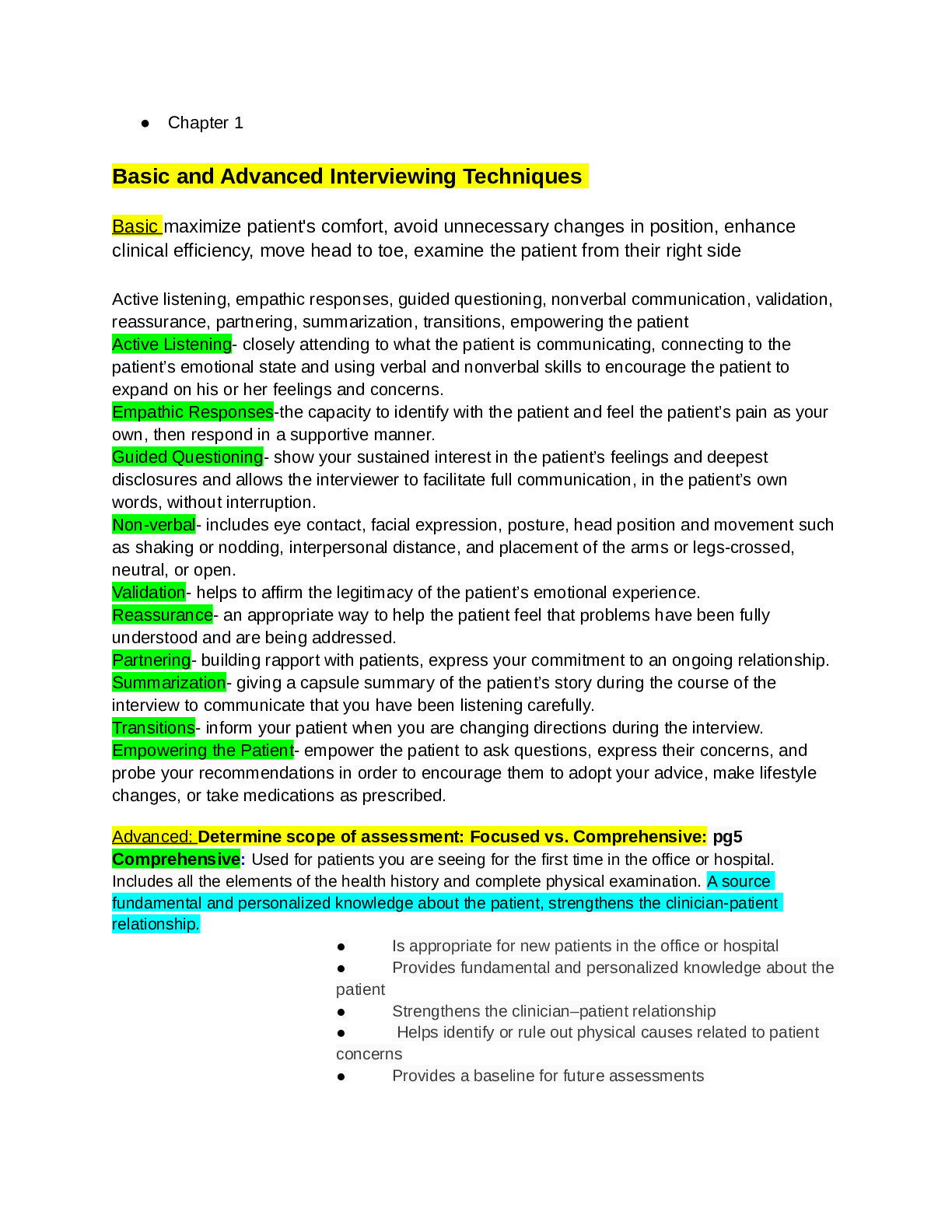
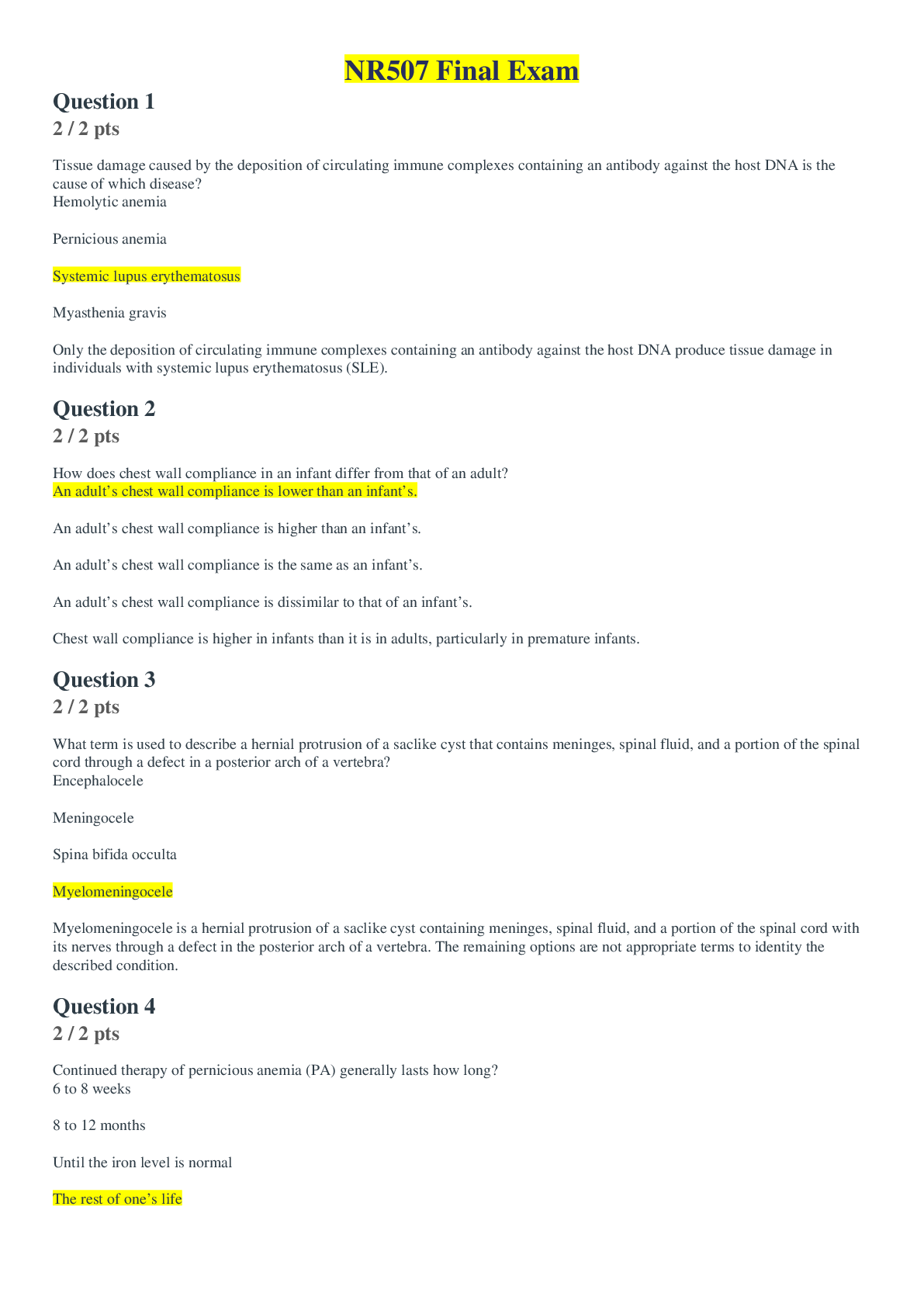

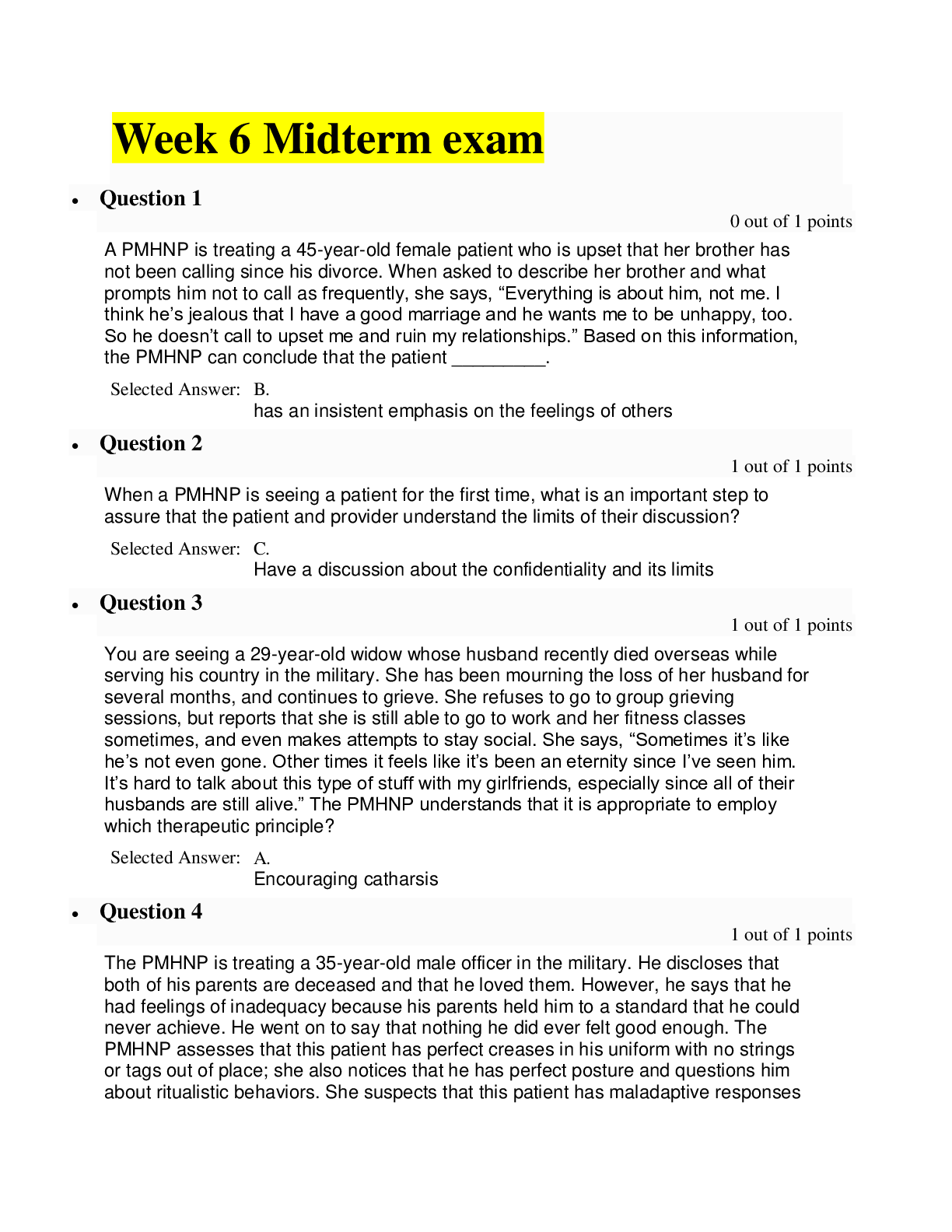

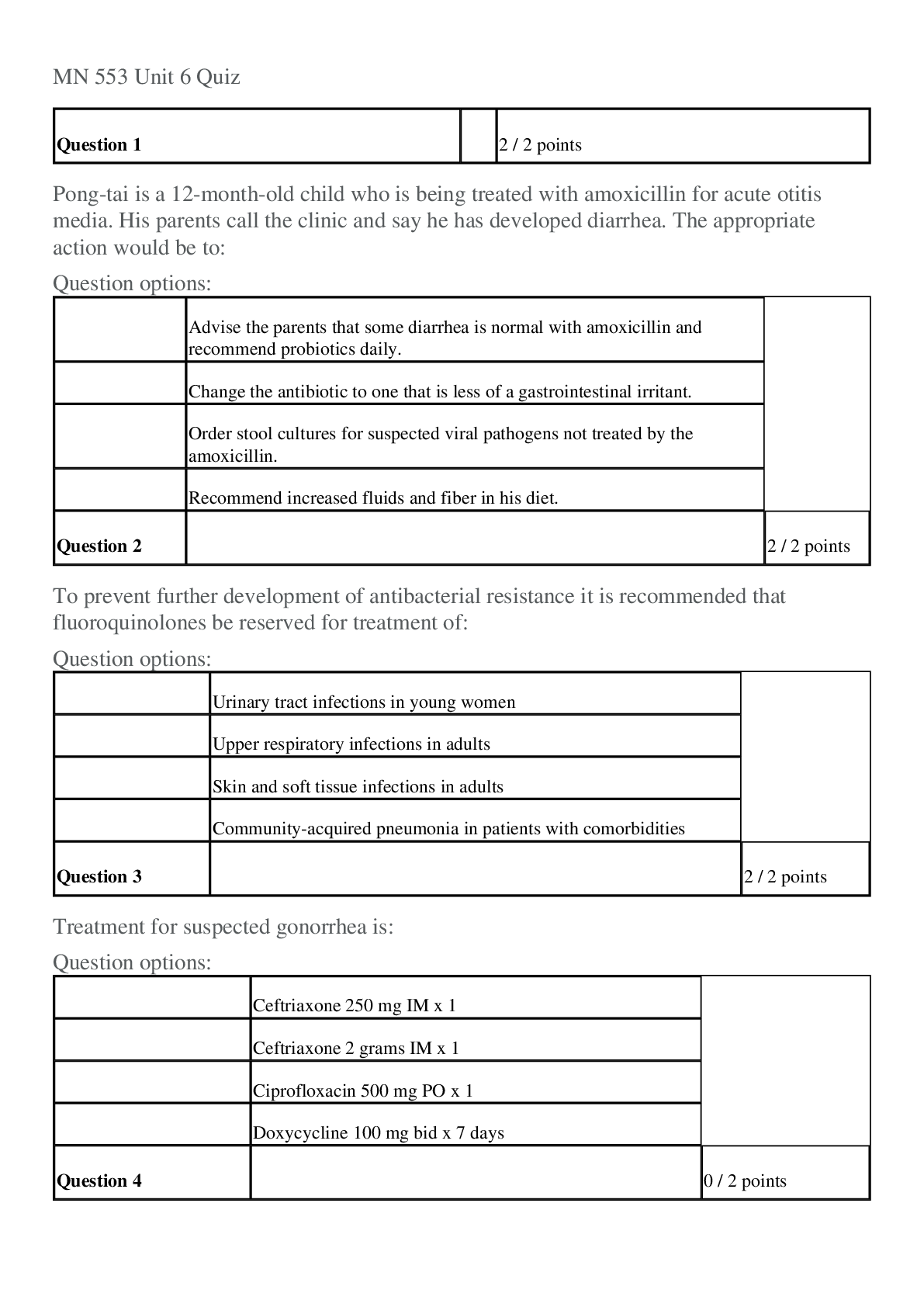


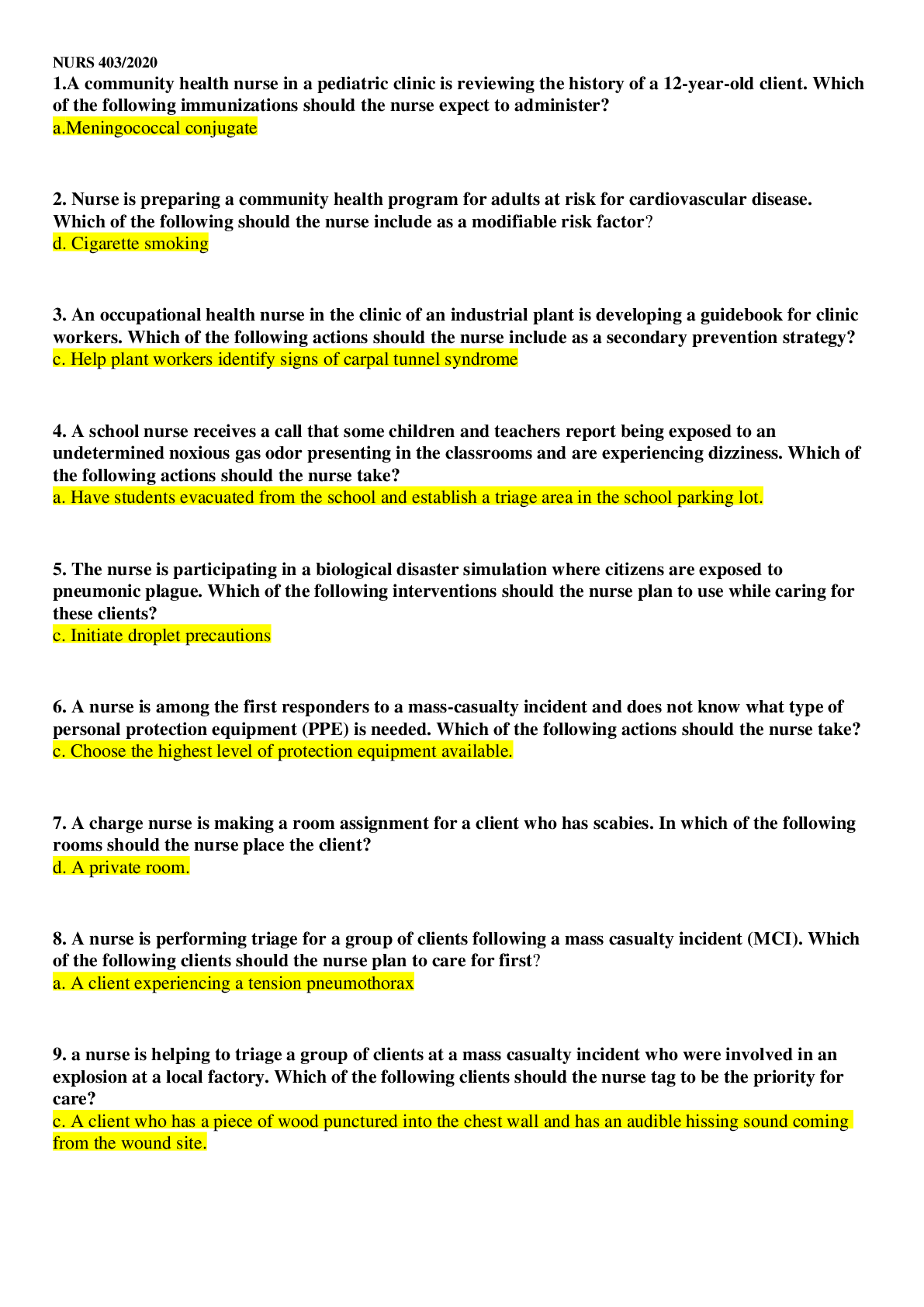

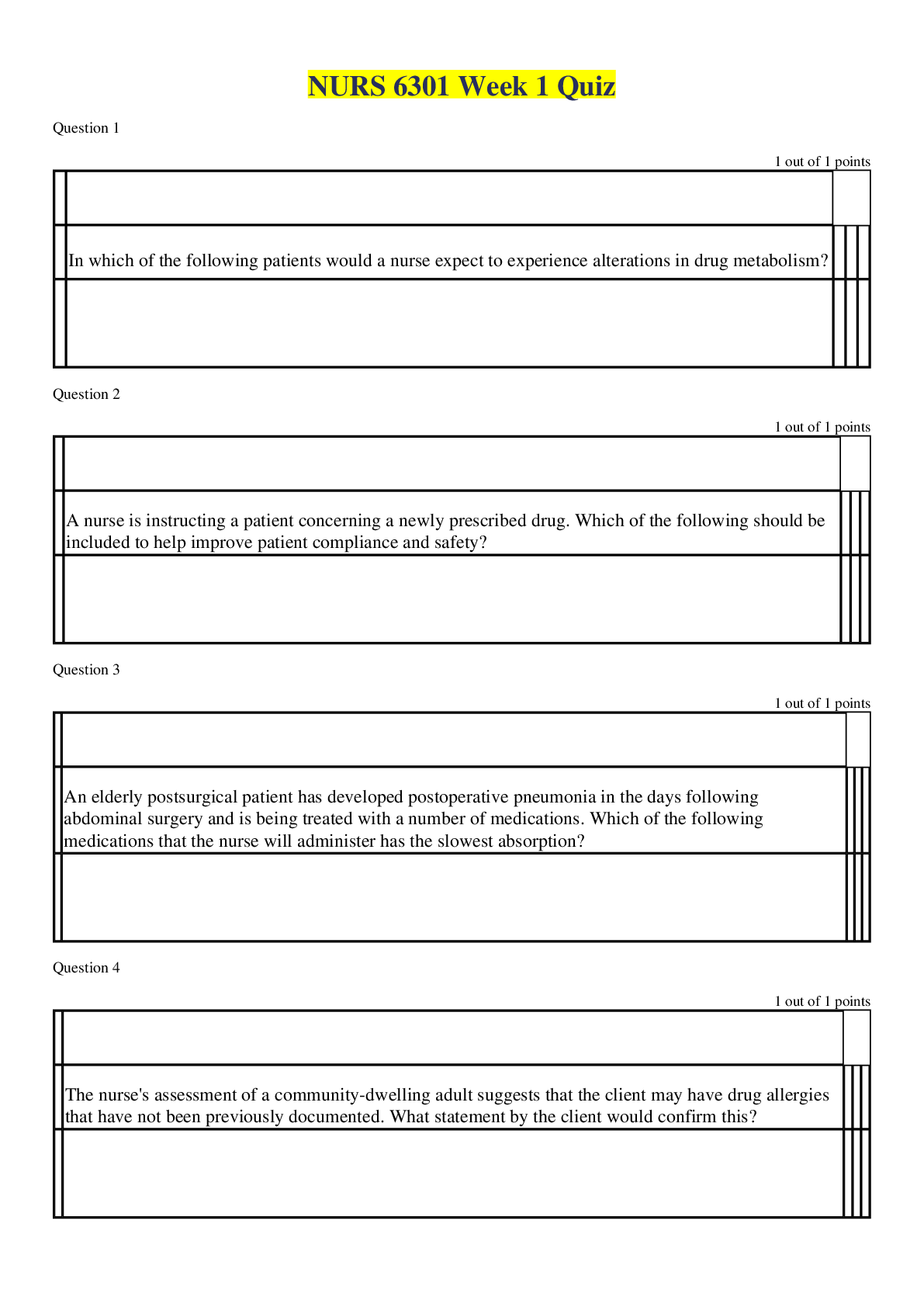
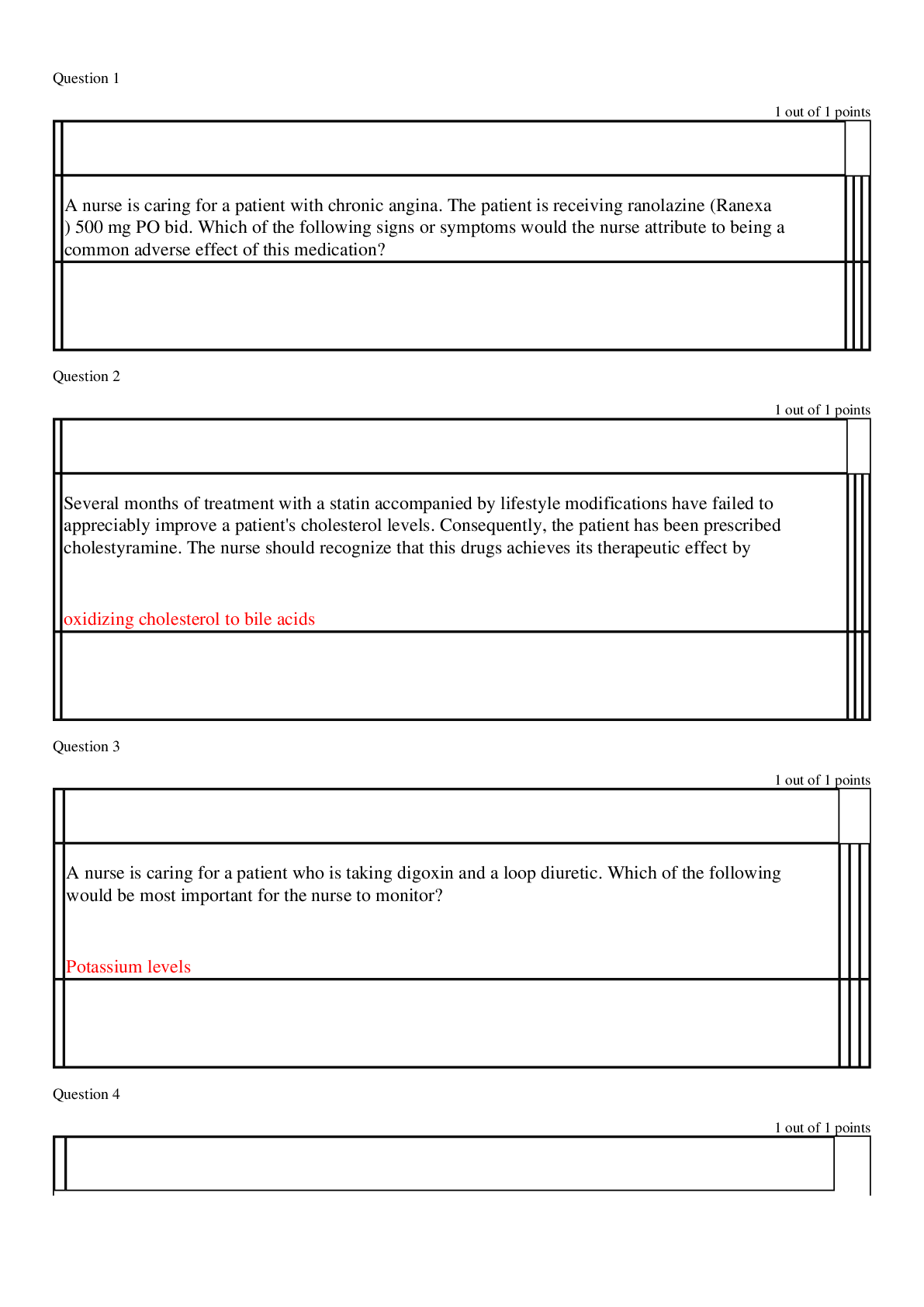

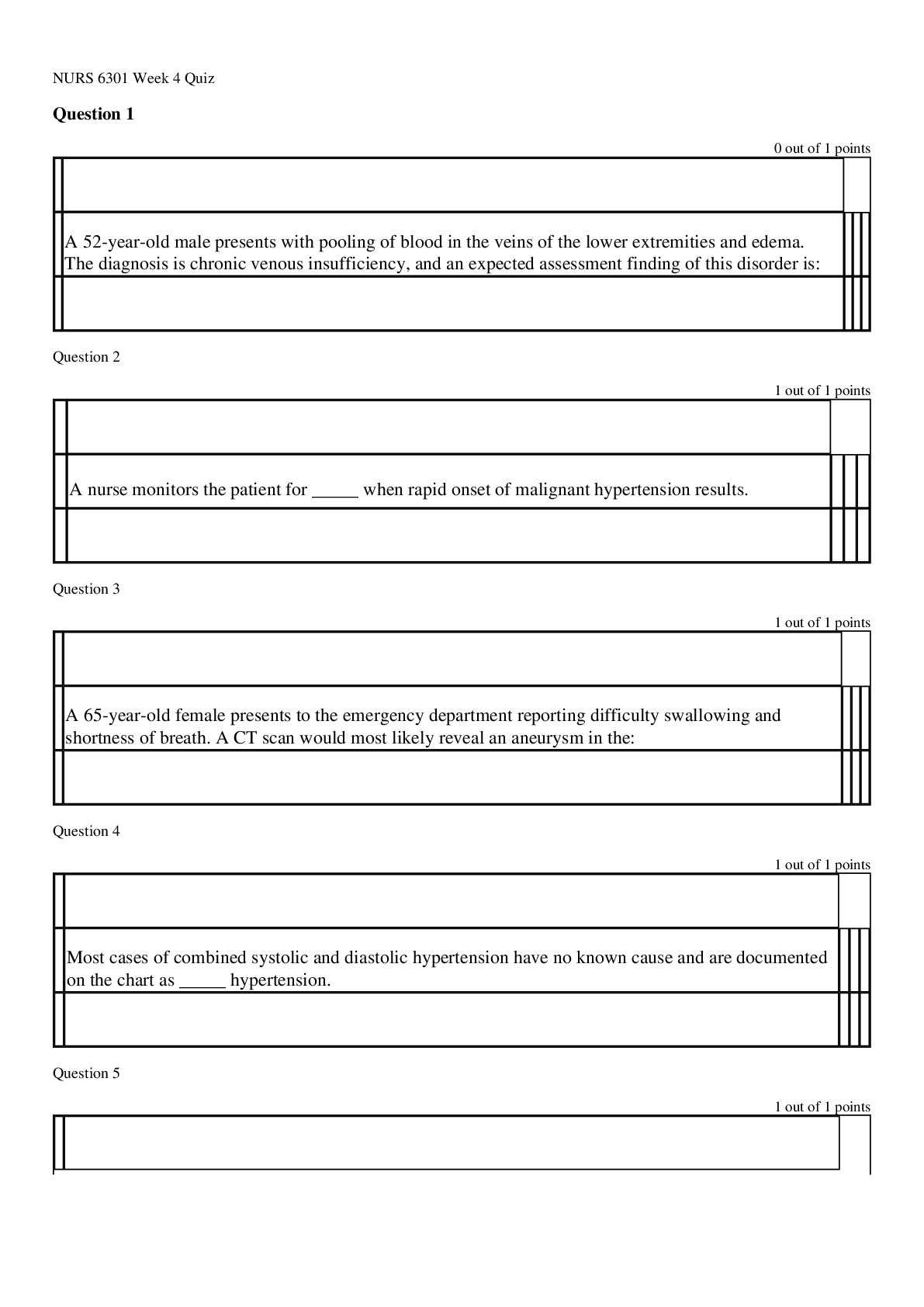

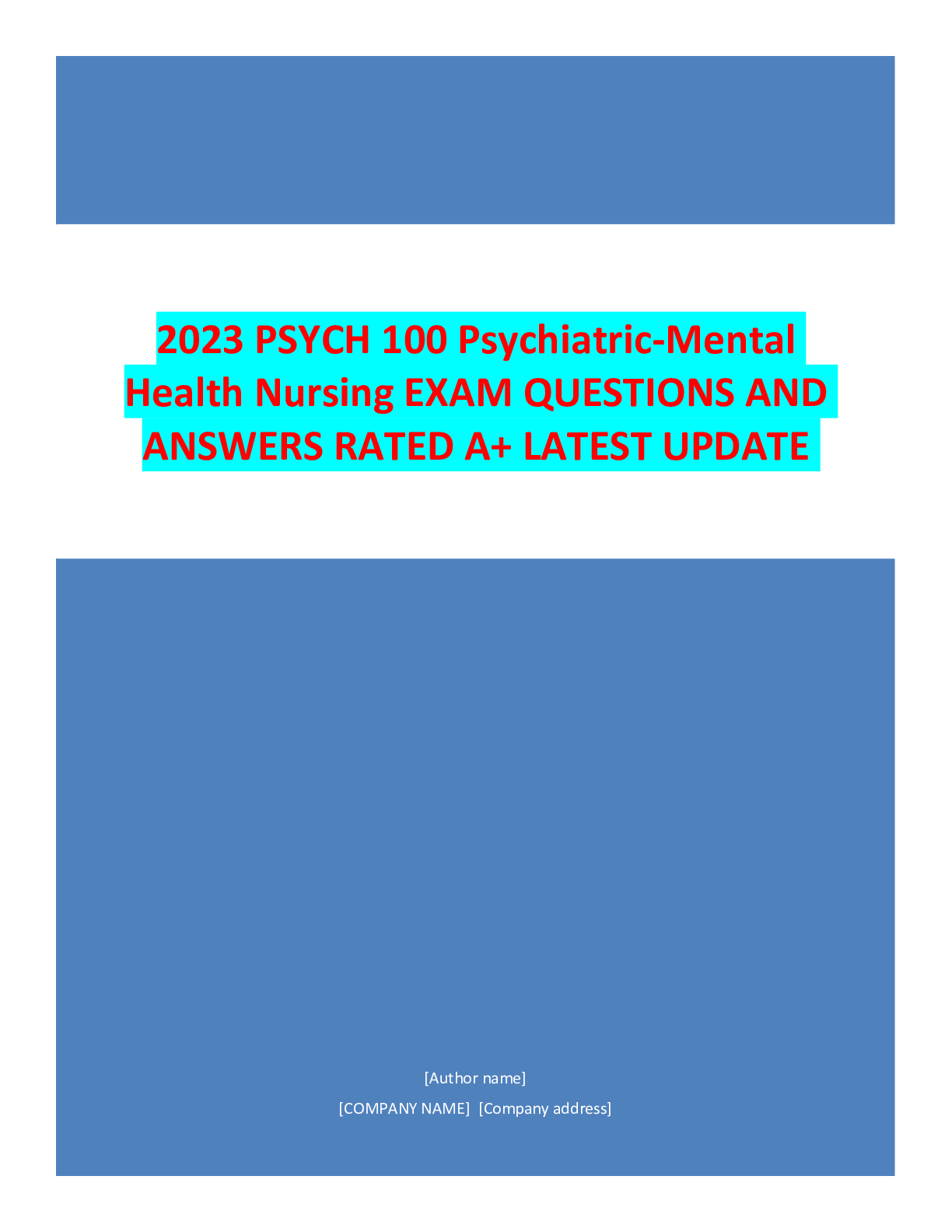
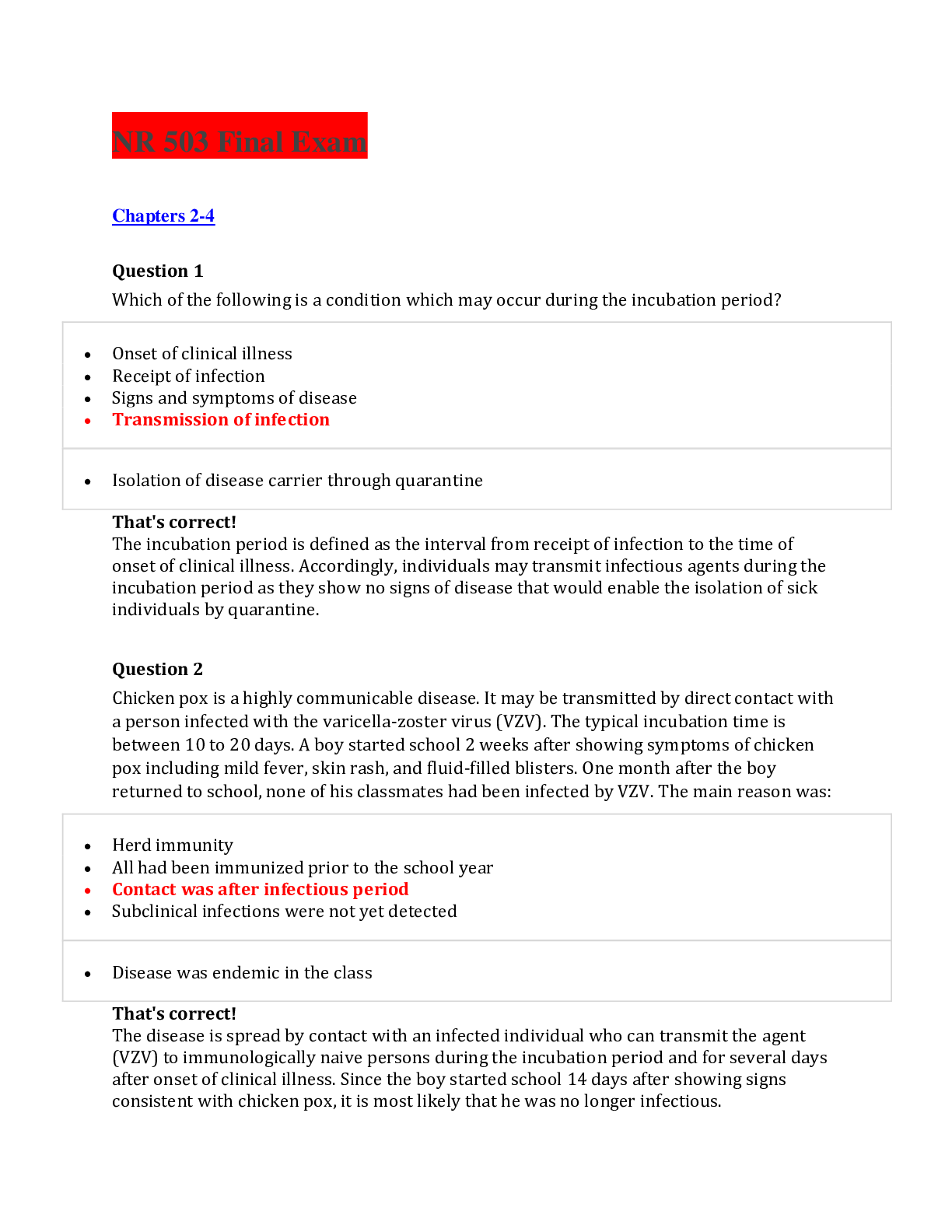

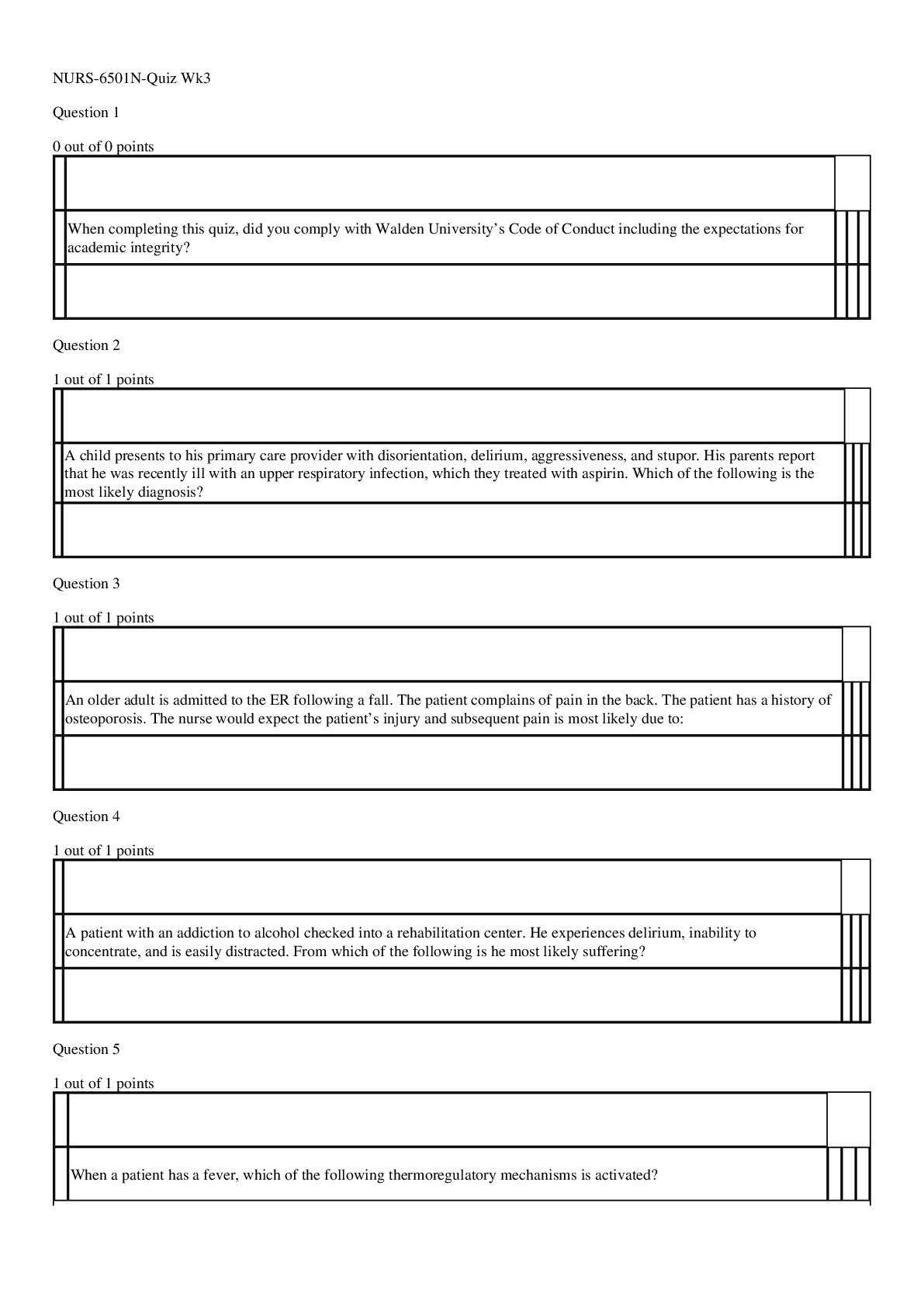
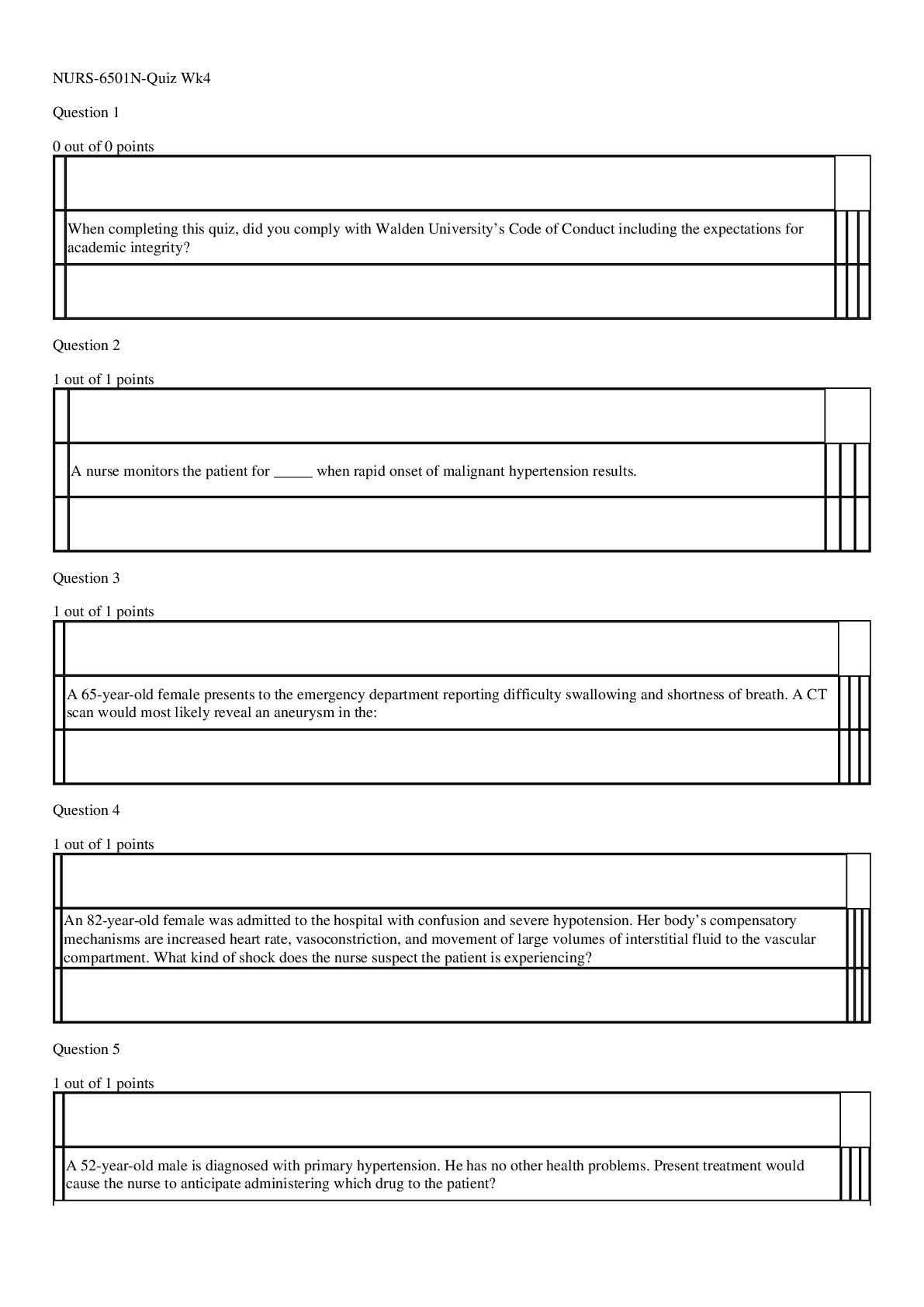
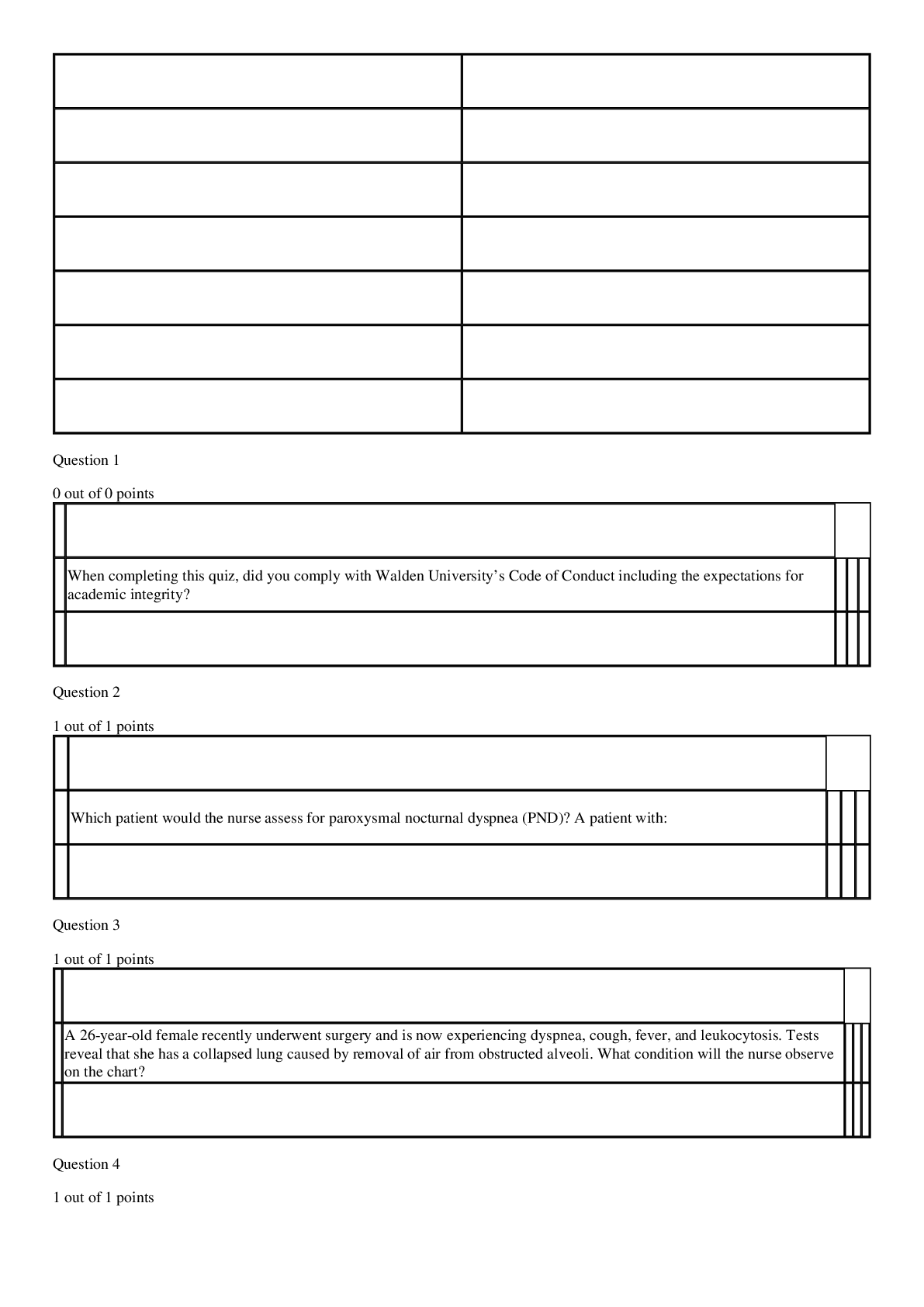
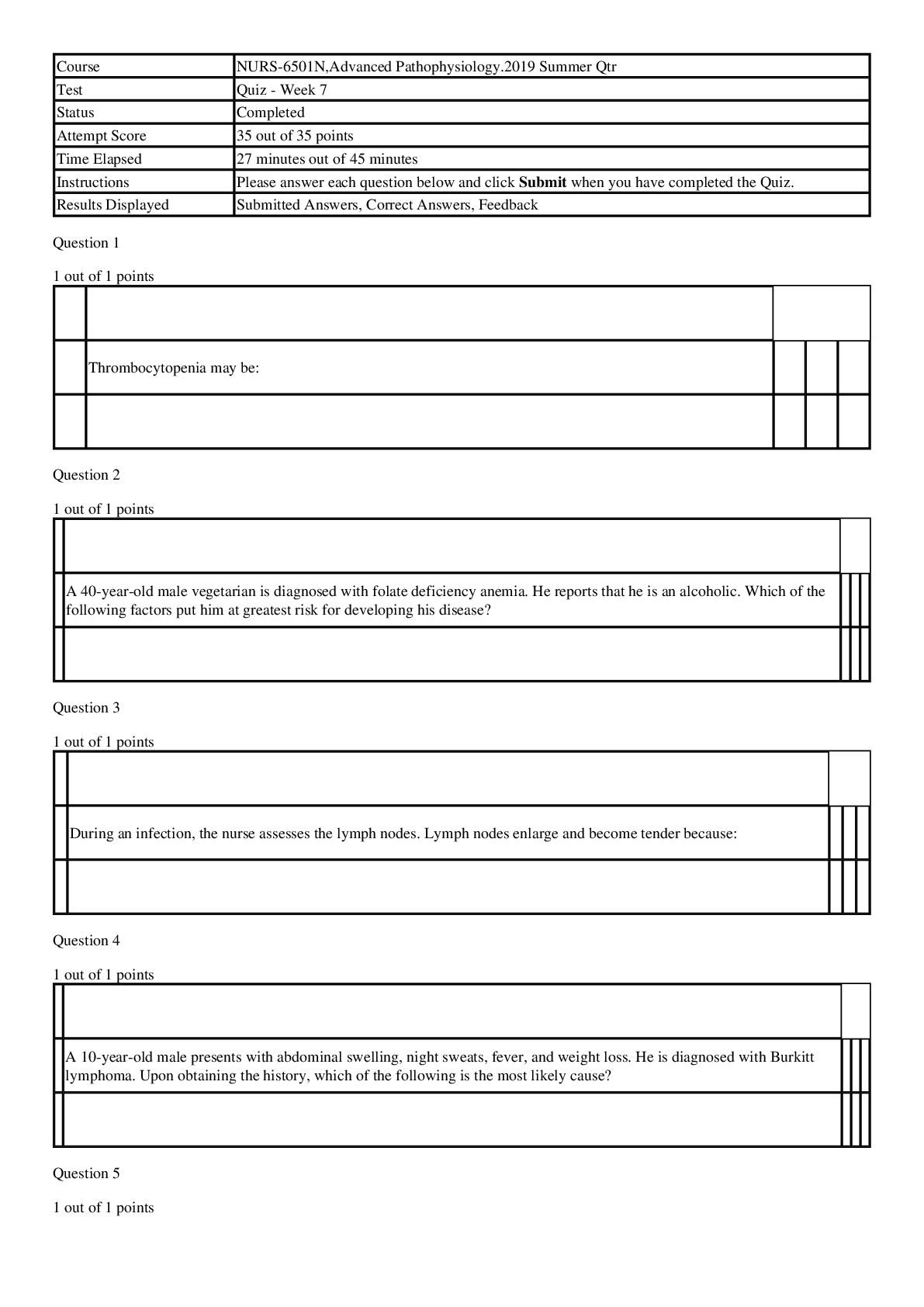
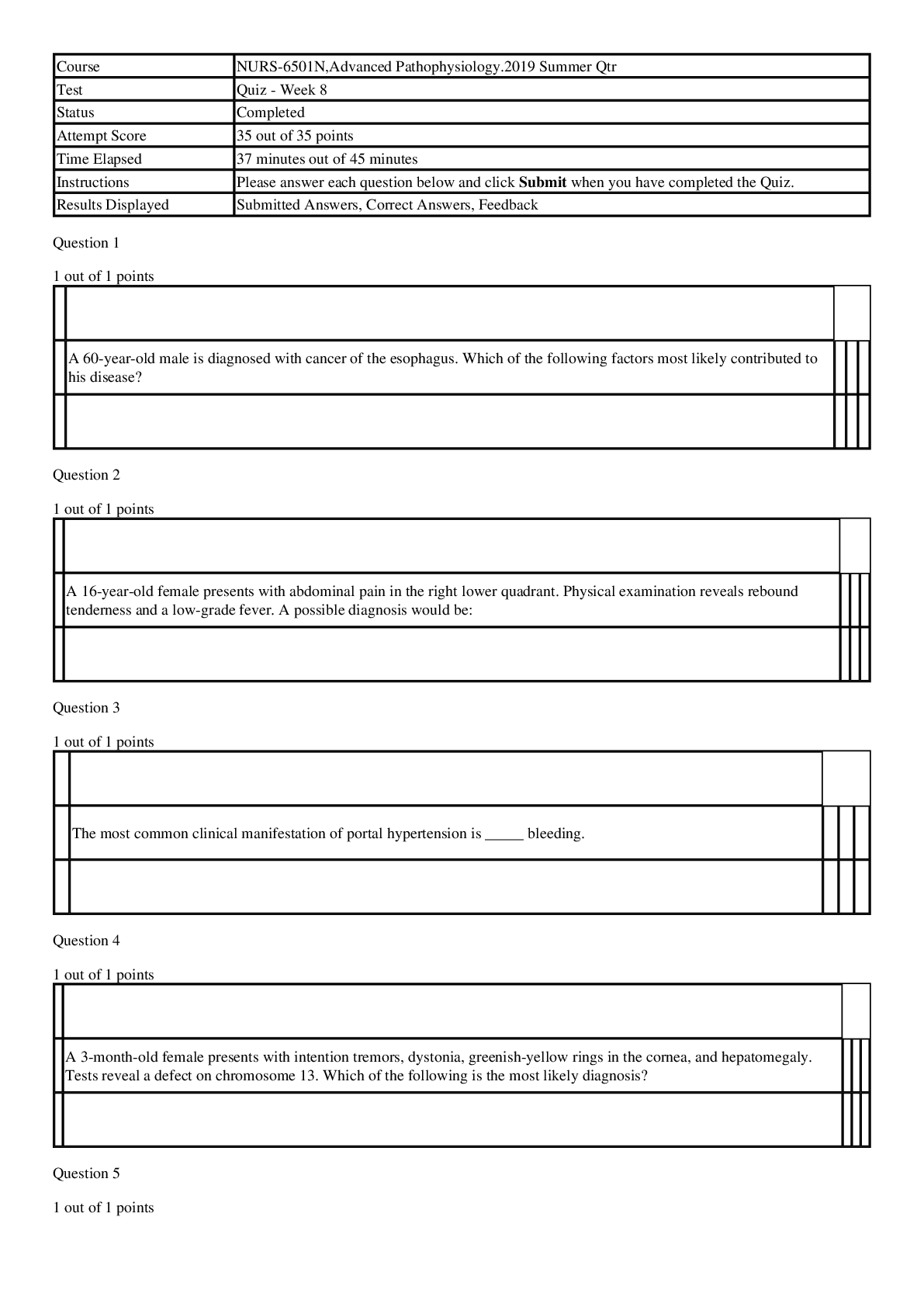



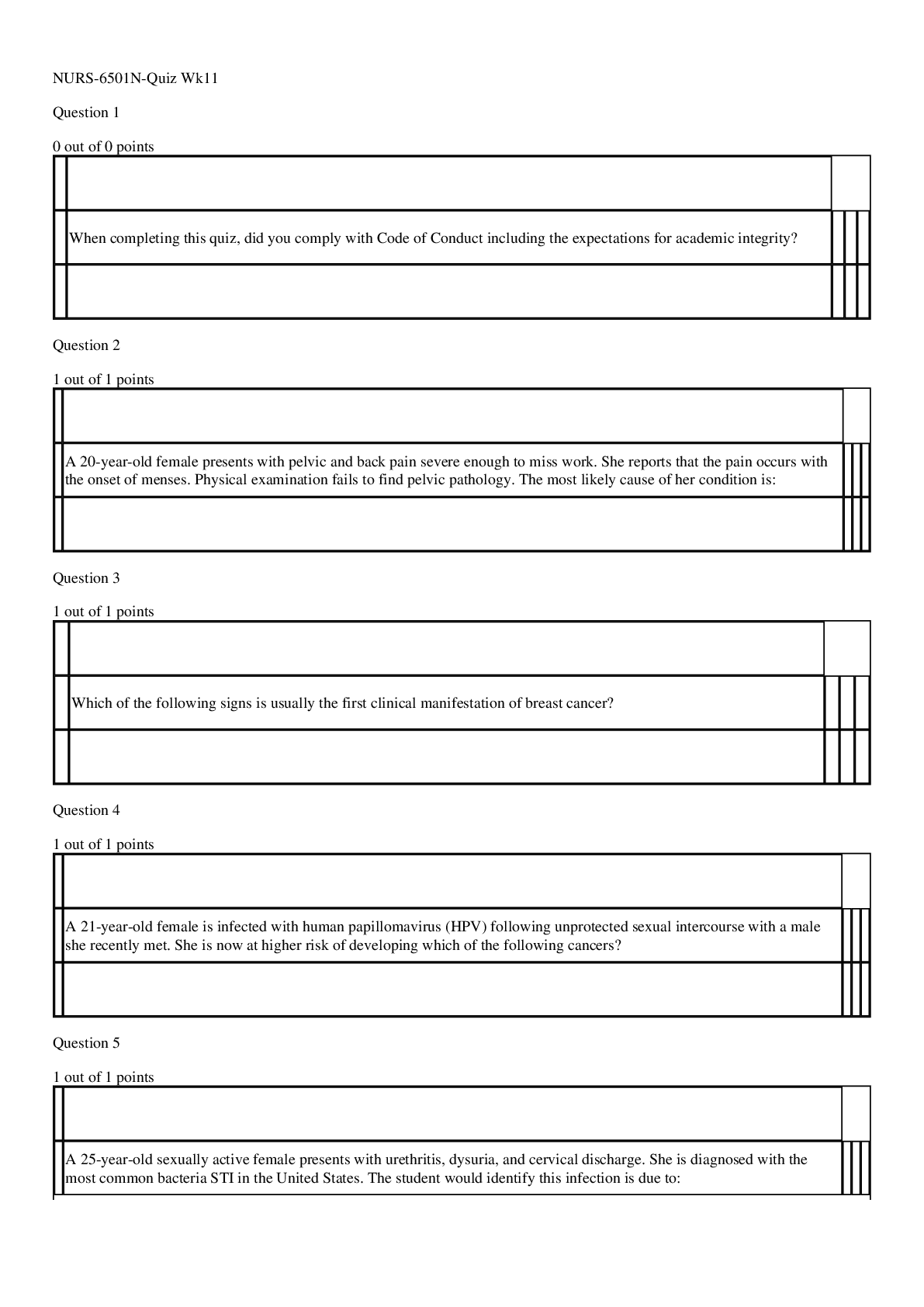
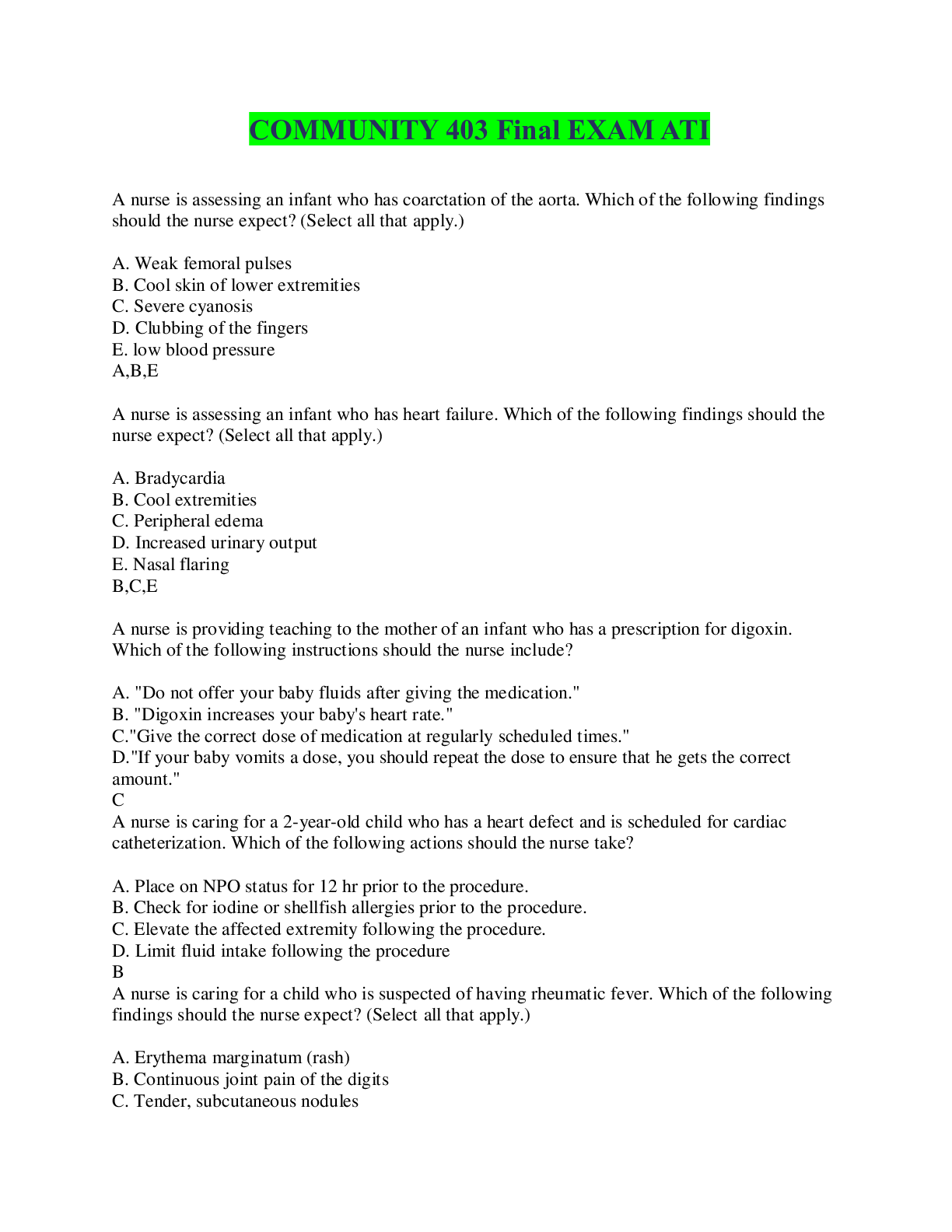
.png)
